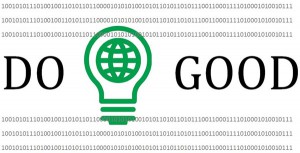
We live in the age of data. It’s a well-used buzzword, a trending topic among a wide range of people from marketers and social media experts to business analysts and tech nerds. This is for good reason: data does help organizations manage themselves more efficiently and plan better.
More recently, however, data has been touted as a tool for greater social good, for the shared benefit of society at large. It has become popular in the nonprofit sector; whole fellowships and degree programs have sprung up around it—such as Data Science for Social Good Fellowship at the University of Chicago. Just peruse our own website and you’ll see that we also subscribe to the idea that data is a powerful tool for doing good, and one worthy of investment.
So data has broken out of the strict business model and is now an inspirational tool for change. How?
1. Data collection and analysis are tools that can guide mission-driven organizations to make a greater impact on the world.
As Melinda Gates said at the Clinton Global Initiative 2014 conference, “Data instructs where & how you work. You have to have data to know where you’re making progress.” The reverse is also true: data provides the knowledge necessary to see where you are not making progress and, thus, need to focus efforts or come up with a new approach.
For mission-driven organizations whose aim is to reduce poverty, protect the environment or raise awareness, the result of appropriately using data is more targeted efforts that more effectively accomplish these goals.
2. Data analysis is a tool both for learning from the past and for predicting the future in order to address inequality and prevent harm.
The old trope—“Those who do not learn from history are doomed to repeat it”—is true. Data analysis interrupts this cycle of repetition by using history to create predictive models of future occurrences and behavior. These models are then used to find potential solutions which can change the course of events for the better.
The current Ebola crisis provides an example. According to David Talbot in the MIT Technology Review, researchers are using cell phone data from 2013 to analyze travel patterns across West Africa. This data is being used to create a model of population movements which researchers can use to predict the spread of this deadly disease and focus efforts at eradication. Talbot says, “Data can show where people have gone after leaving a hot spot, suggesting where a disease cluster may crop up next.” Thus, using historical data, we can plan interventions that alter or disrupt probable future events.
3. Data analysis and programming are tools of innovation to create technological solutions to social problems.
In “hackathons” happening around the country, data and tech enthusiasts are inventing new uses of data and creating web and mobile applications that, in many cases, improve quality of life and access to resources.
For example, in 2013, fellows from Code for America partnered with the San Francisco Human Service Agency to create an app called Promptly that uses that agency’s data and notifies food stamp recipients of actions they need to take in order to keep getting food stamps…before they stop getting food stamps. This preventative measure reduces the stress and hassle surrounding a loss of one’s benefits and, thus, improves quality of life.
Data has a staggering potential to help do-gooders do good. There is reason to be so excited about it! Where have you seen data benefit society?
Click here to learn more about Big Water Consulting and their work.